

William Stopford
The cars axed in 2025 that we'll miss the most
1 Hour Ago
The i30 Sedan's progressive styling, mouth-watering cockpit and newfound ride and handling competency are three good reasons to put it on your shortlist.
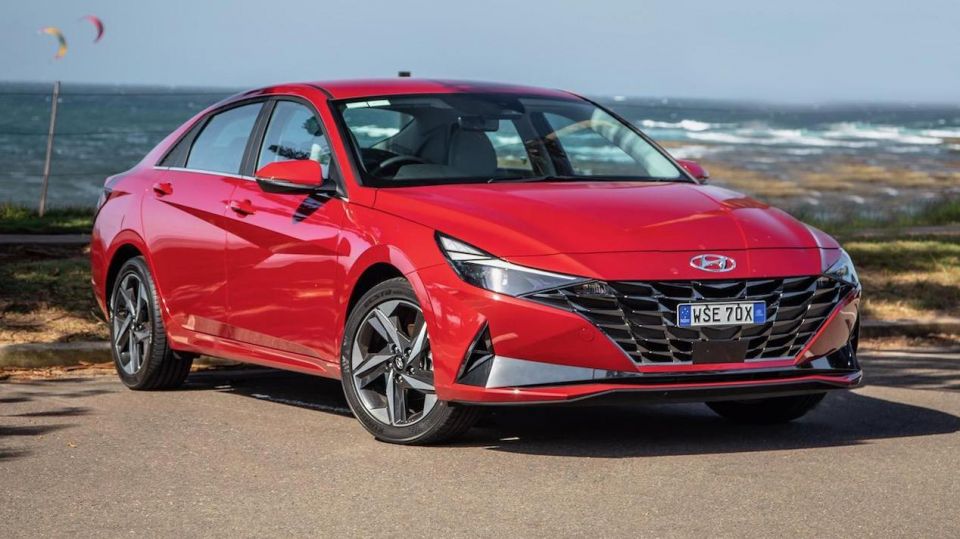


Senior Road Tester
New from
$30,040
excl. on-roads

Senior Road Tester
New from
$30,040
excl. on-roads


Senior Road Tester
New from
$30,040
excl. on-roads

Senior Road Tester
New from
$30,040
excl. on-roads
Quickly see how this car stacks up against its competition. Select any benchmark to see more details.
Where expert car reviews meet expert car buying – CarExpert gives you trusted advice, personalised service and real savings on your next new car.
If ever there was a car which could sway me from hatchback to sedan it would be the all-new Hyundai i30 Sedan – in mid-spec Elite guise, specifically.
Don’t shoot me for this instance of puerility, but step inside and you could be forgiven for thinking you’re in the latest Mercedes-Benz A-Class. No joke.
But, even before you’re wowed by its cutting-edge cockpit, it’s the i30 Sedan’s edgy design – looking all-the-more like an origami creation in metal that’s bound to attract undivided attention in a world of generic shapes that seem to proliferate the entire automotive landscape, at least at the affordable end of the market.

Sedans might only make up less than 23 per cent of the all small cars sold here, but the i30 (known elsewhere as the Elantra or Avante) is truly a refreshing approach that will have you looking twice at it, particularly from the rear three-quarter view, though, the whole car looks genuinely sporty and downright exciting in the ubiquitous world that is SUVs.
The fact that we have access to it now is no small feat, because we get the only right-hand drive version, as it’s not sold in Europe (including the UK).
And, as well as the new technology, the chassis has been locally tuned for what is quite exceptional ride and handling for a not-so-small sedan in the small car class, if that makes sense.
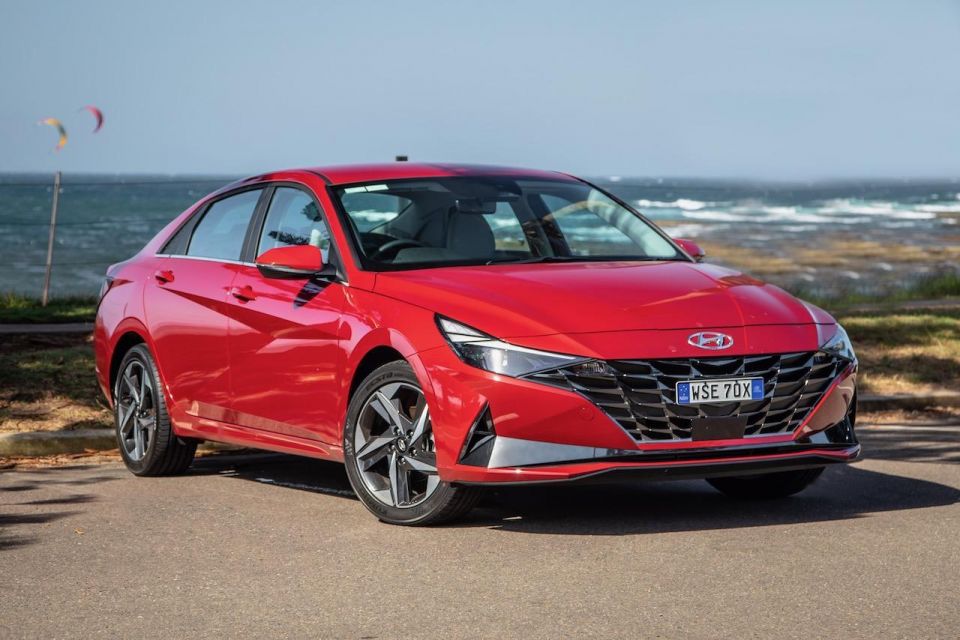
Moreover, it’s also based on a brand-new platform, which means the current i30 hatch sold here now is slightly behind the eight ball or at least until the third-generation K3-platform version of the hatch drops in the next 18-24 months or so. Hopefully, that’s not too confusing.
The other big reason Hyundai Motor Australia was dead keen to get its hands on the new i30 Sedan is that by combining its sales with the i30 Hatch, puts the model line in a position to compete with the top-selling Toyota Corolla on a level playing field given Toyota has been notching up sales of its Corolla sedan and hatch as a single model for years.
And while the Elantra tended to be bought by older folks, the i30 Sedan is far better equipped (quite literally) to go after an entirely new set of younger buyers thanks to its tech-heavy play and cutting-edge body work. Of course, there’s always the possibility that the new sedan might also start winning over i30 hatch buyers, too.
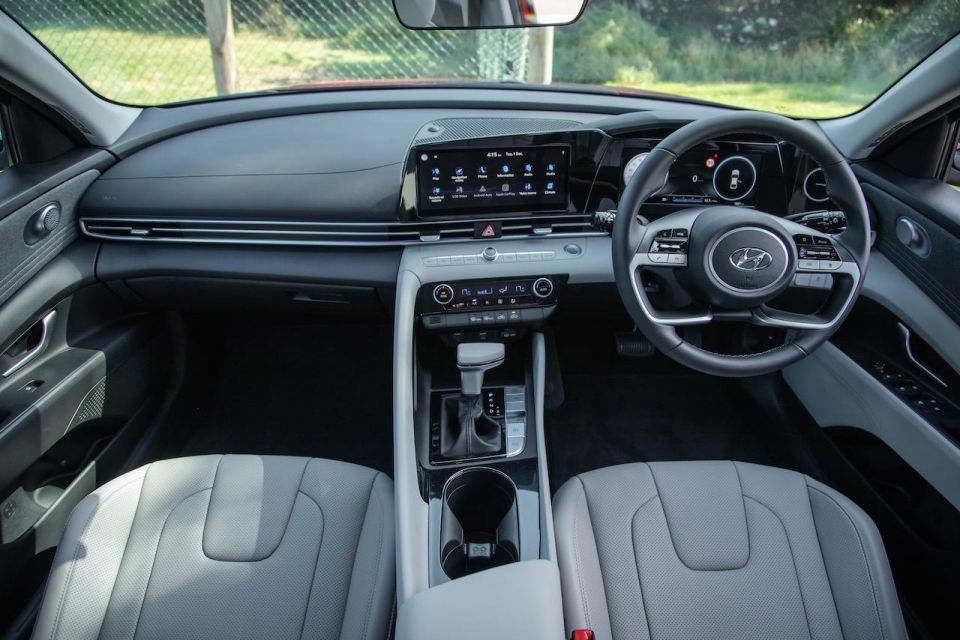
It’s smack-bang in the middle of the new i30 Sedan line-up, and from where we sit, is the absolute sweet spot in the range with a price tag from $30,790 excluding on-road costs.
Not only does that get you all the cool infotainment tech, but also adds a full suite of active safety systems which is why is ticks all the right boxes.
However, if you’re keen on the more powerful 1.6-turbo N Line you can hop into the manual version for as little as $30,290, or $32,290 with a seven-speed dual-clutch auto.
Buy your new car without the stress. It's fast, simple and completely free.

Great service from Travis and team, second time I have used this business would not hesitate to recommend them to anyone
Craig C.
Purchased a Ford Ranger in Sunshine Coast, QLD
CarExpert helped Craig save thousands on his Ford Ranger, now let us save you on your next new car.
Find a dealAt the end of the day, the price you pay at the dealership will be dependent on a number of factors such as when you want to buy (is the dealership chasing sales?), the age of the model you’re purchasing (is a new generation model being launched soon) and of course your strength as a negotiator.

For the top-spec N Line Premium with the whole box n’ dice, there’s a $5000 premium which bumps the price to $37,290 plus on-roads.
The only option across the entire i30 Sedan range is Premium Paint for $495 and applies to Lava Orange (specific to N Line versions) and metallic colours like Fluidic Metal, Amazon Grey, Intense Blue, Fiery Red (tested here) and Phantom Black. Polar White being the only standard colour.
Equivalent rivals for our i30 Sedan Elite tester include the top-selling Toyota Corolla SX Hybrid ($30,795), Kia Cerato Sport+ ($29,540), Mazda 3 G20 Touring ($30,590), Subaru Impreza 2.0i-S (31,160) and the Honda Civic VTi-L ($30,090) – though, I’d argue none come close to the Hyundai in design or get the level of tech inside the cabin.
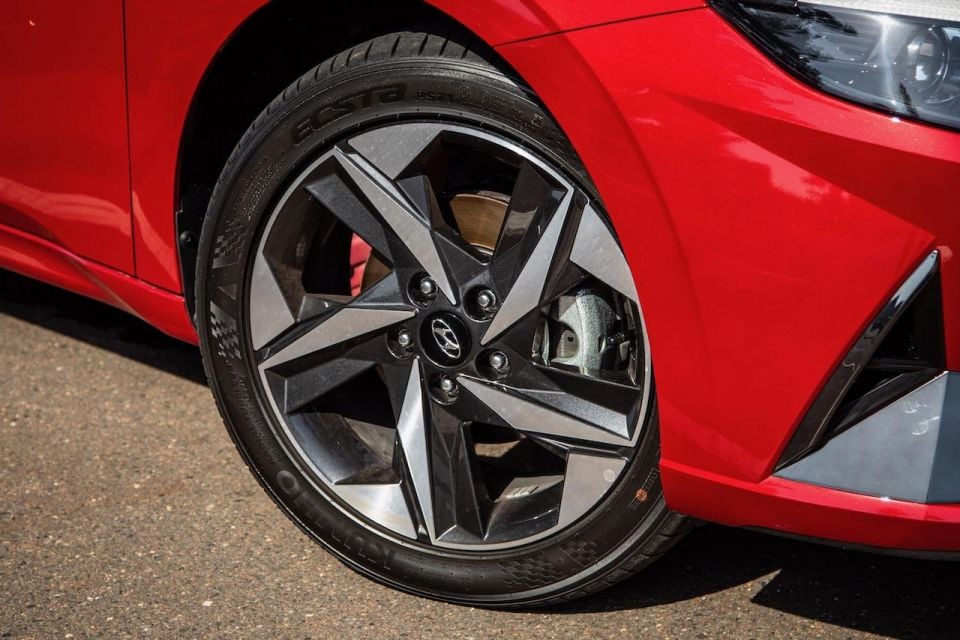
Hyundai (and Kia) have always been a solid value-for-money proposition, but the i30 Sedan takes that to a whole new level with standard leather upholstery across the entire i30 Sedan line-up (black for the entry-level Active, black/grey for Elite and black sports leather for N Line variants).
There’s also Apple CarPlay and Android Auto with wireless phone charging, auto headlights with LED daytime running lights, rear parking sensors with reversing camera, 17-inch alloy wheels, full-size spare wheel and electronic parking brake as well as a suit of safety assist systems including adaptive cruise control, lane following assist, lane keeping assist, driver attention warning and autonomous emergency braking.
Our i30 Sedan Elite tester ups the creature comfort count and safety inventory by fitting a Benz-style dual-10.25-inch high-resolution screens encompassing an instrument display and multimedia touchscreen with in-built navigation. I can’t praise this system highly enough for its clarity, response and driver-centric configuration. It’s absolutely benchmark for the small car segment under $40,000.
However, there is an odd-looking inert dial on the far right of the screens that looks like it should light up as digital version of an analogue clock, but apparently, it’s for the drive mode control on the N Line models which land this month.
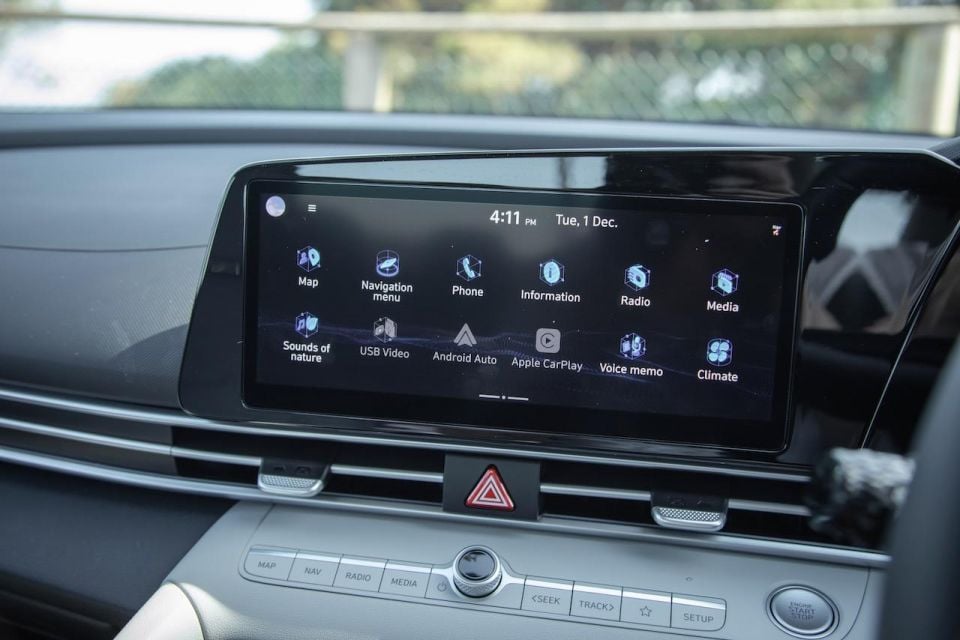
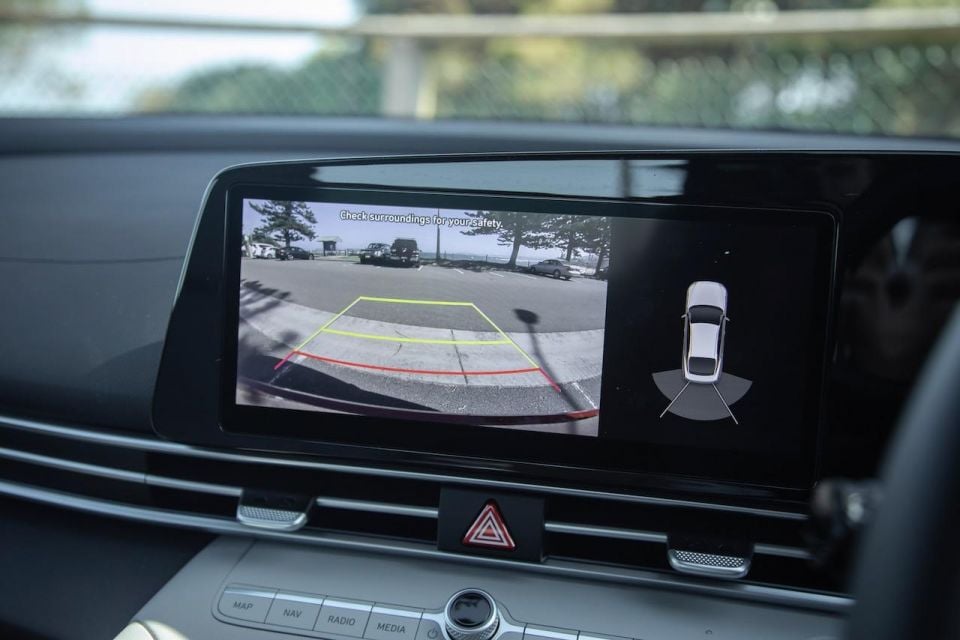
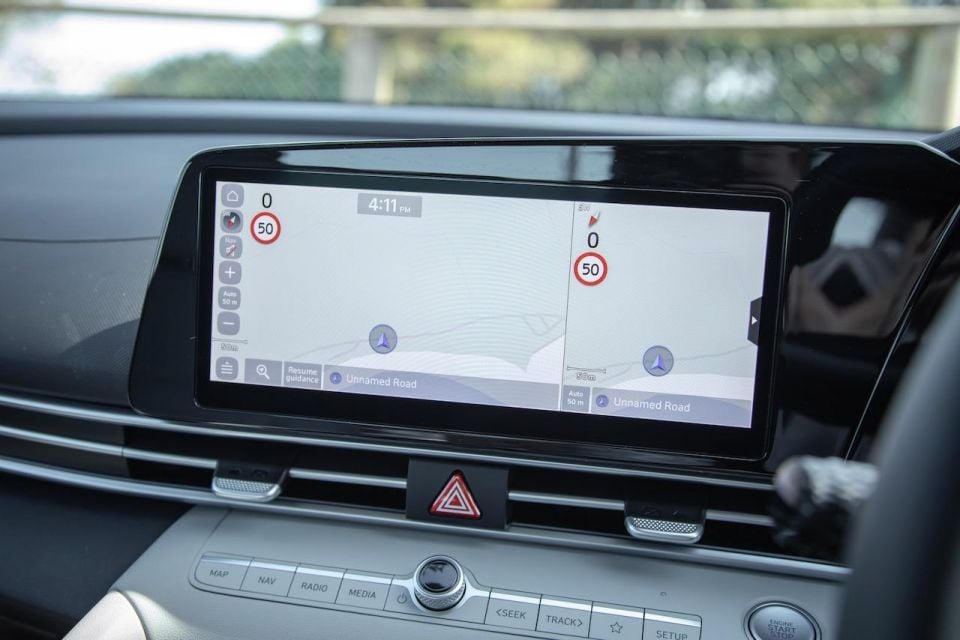
You also get a customisable 64-colour mood lighting system as well as a brand-new steering wheel design that not only looks next-level fresh but also feels great to the touch, and with all the usual shortcut buttons including audio functions, cruise control and configurable buttons for the instrument display.
It doesn’t stop there, either, the Elite is also equipped with a Bose eight-speaker audio system featuring DAB+ radio, but misses out on LED headlights and tail lights (standard on N Line).
Oh, and you also get wireless Apple CarPlay and Android Auto on the base (Active) and N Line variants as they don’t have inbuilt navigation – you can read more about Hyundai and Kia’s reasoning for that here.
For those buyers in a position to stretch the budget, the extra goodies fitted to the N Line Premium might entice you further with the likes of heated and cooled front seats, electrically-adjustable driver’s seat, anti-dimming rear-view mirror, sun visor extensions, front parking sensors, sunroof and solar glass.
Moreover, there’s extra safety kit with Parking collision-avoidance rear as well as a more sophisticated multi-link rear suspension.
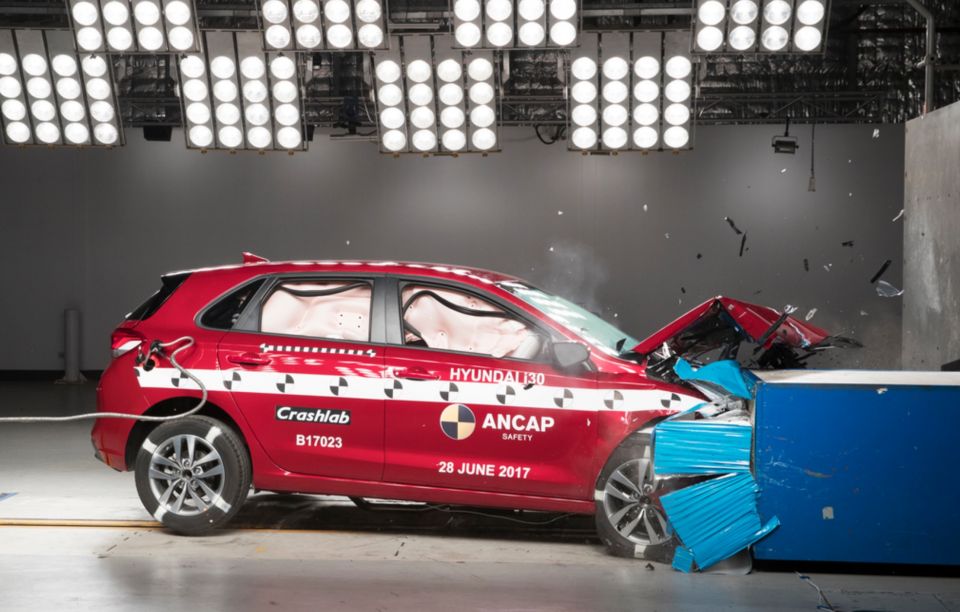
First and foremost, the all-new Hyundai i30 Sedan is yet to be crash tested by ANCAP. It’s not sold in Europe, (only the United States as an Elantra) so there’s no Euro NCAP rating, either. That said, the i30 hatch was awarded a five-star ANCAP rating in April 2017, accounting for all i30 hatch variants.
Furthermore, in June 2017, ANCAP crash tested the previous Elantra, which shared the same platform as the i30 hatch, in a frontal-offset crash test that resulted in a 14.80 from a possible 16 points – enough to meet the five-star safety rating.
The latest iteration i30 Sedan is based on Hyundai’s third-generation K3 platform which not only offers improved crash safety over the previous model, but also offers a more substantial suite of active safety kit including six airbags, forward collision avoidance assist (AEB – with city, urban, interurban, pedestrian and cyclist detection with junction turn assist), driver attention warning using the windscreen-mounted camera that continually monitors the vehicle’s position in the lane, as well as detecting steering and brake pedal inputs.
There’s also adaptive cruise control with stop/go for auto and DCT versions, lane keep assist which includes lane departure warning and lane following assist that lets you know when the car in front has moved off via an audible warning. That’s standard across the range.
Buyers that upgrade to the Elite and N Line versions add blind-spot monitoring, rear cross-traffic assist, parking collision avoidance assist and safe exit warning to the safety set.
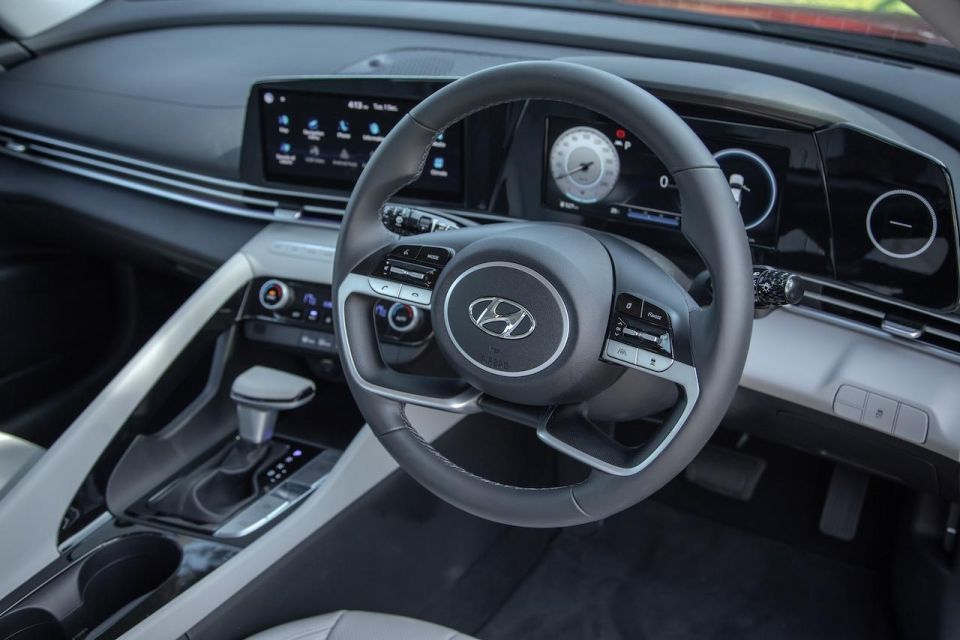
It feels genuinely wrong to classify the i30 Sedan as a ‘small’ car – small/medium is far more accurate.
The side profile shot is enough to demonstrate its longer length than the hatch and there’s the sheer space inside that will please those buyers after more in their small car.
Boot space alone is up significantly on its i30 hatch sibling (474 litres vs 395 litres) with the rear seats in place, growing to 1350 litres when lowered (not quite flat).
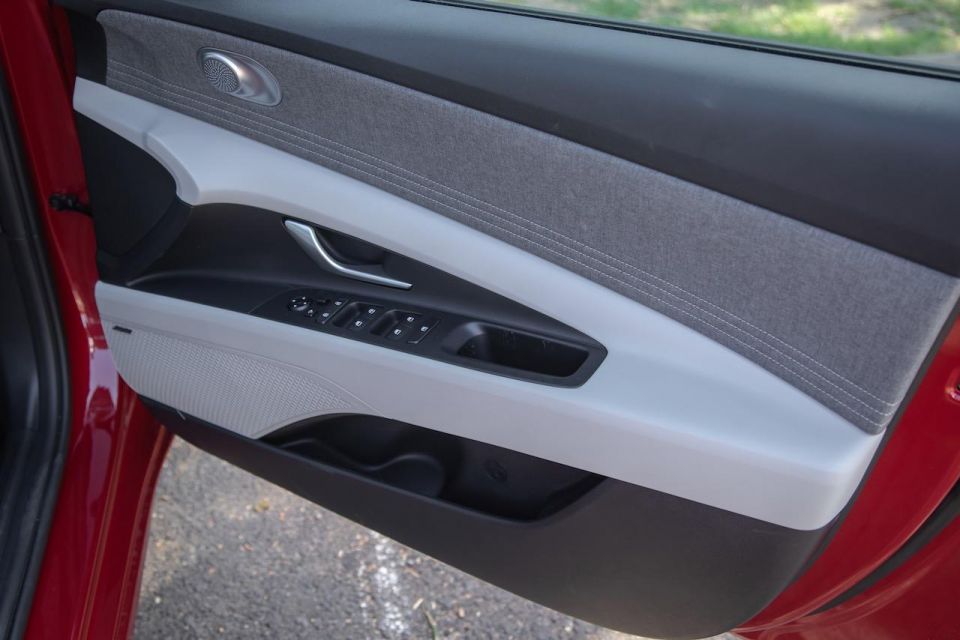

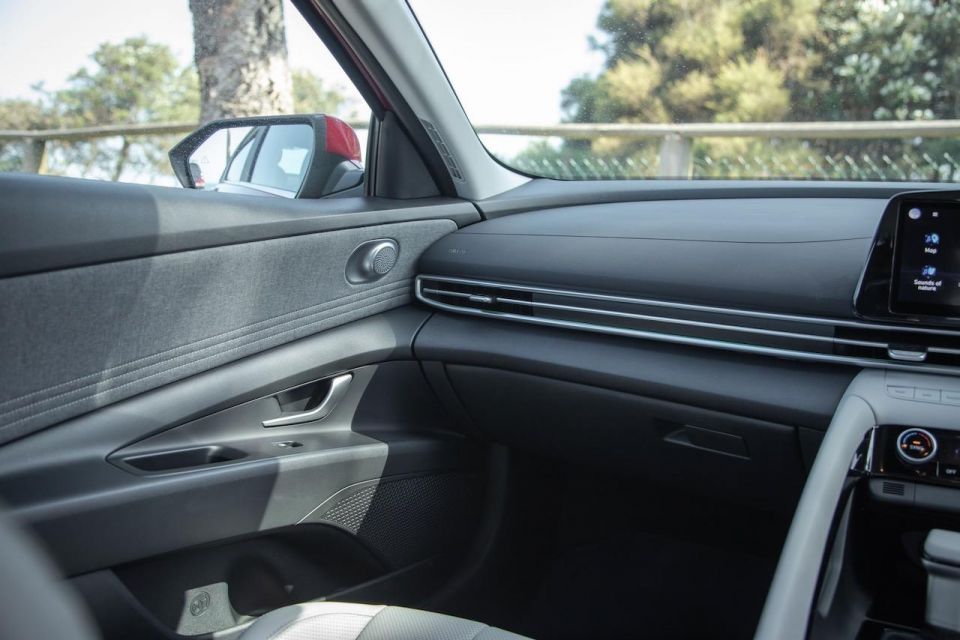
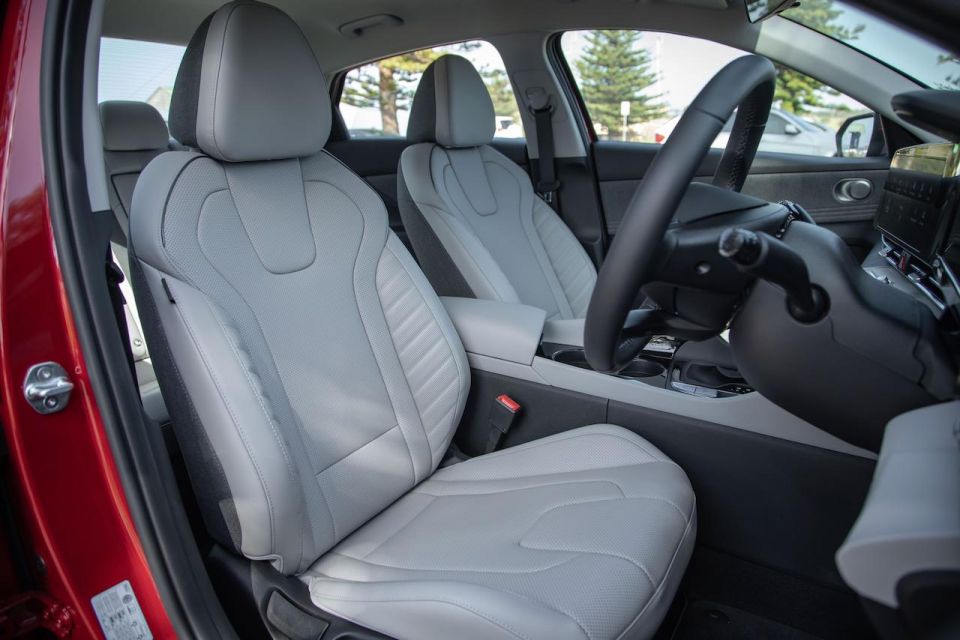
Rear leg space is especially roomy, making longer journeys with the family more comfortable than you might imagine with the seats themselves thickly cushioned and suitably supportive thanks to sufficient bolstering applied to both the seat cushion and seatback.
It’s not just the space that pleases, either, it’s the semi-premium look and feel of this cabin that’s going to convert plenty of buyers, I suspect.
The two-tone interior design is superb with a blend of perforated crème leather, soft-touch greys and a denim-look material on the door trim that make this a very nice place to spend time in.
There’s also plenty of real metal accents and features like the unique ‘grip bar’ that go a long way to add some genuine class to the i30 Sedan cabin.
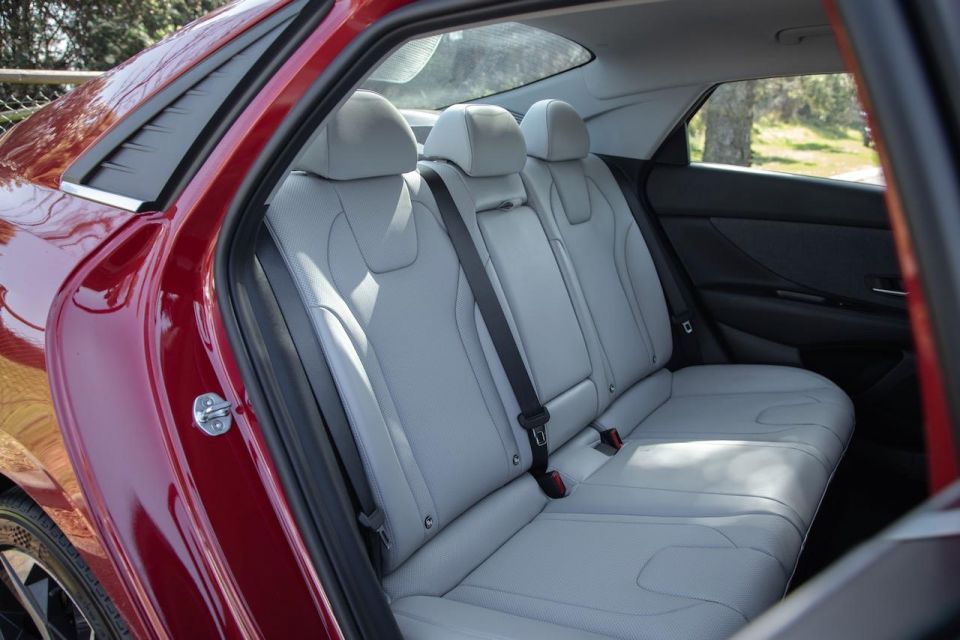
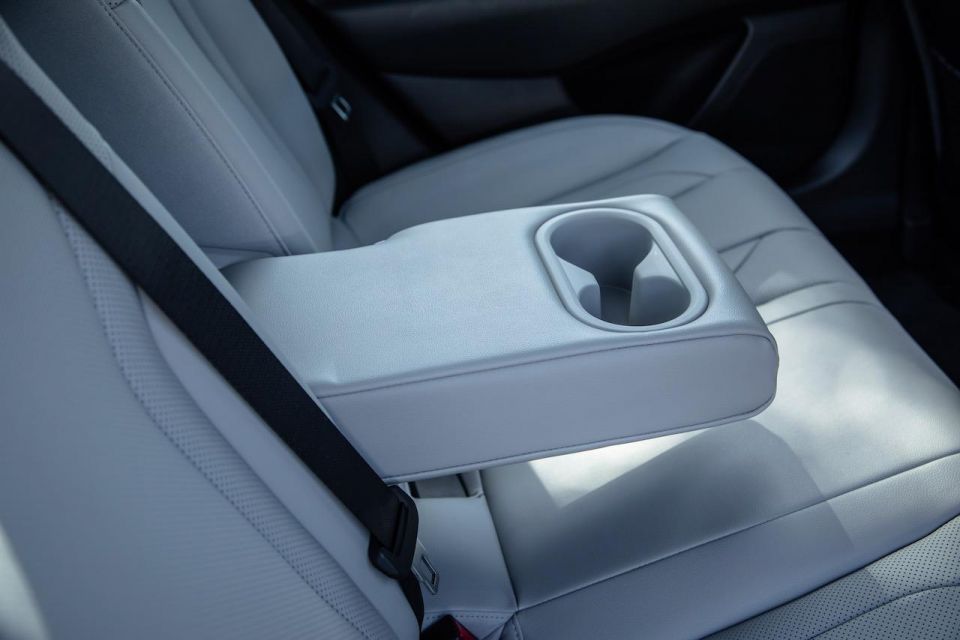
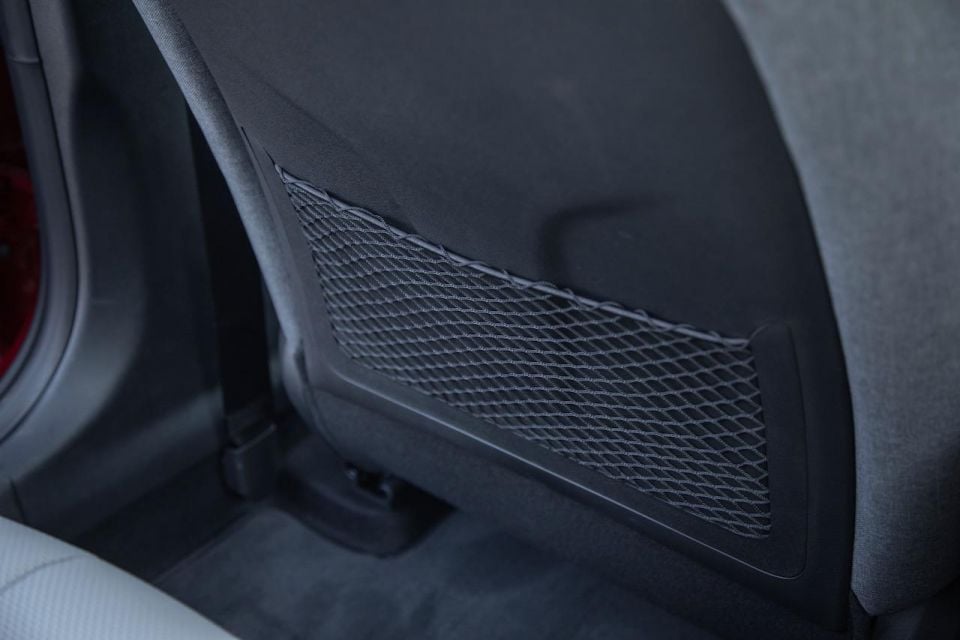
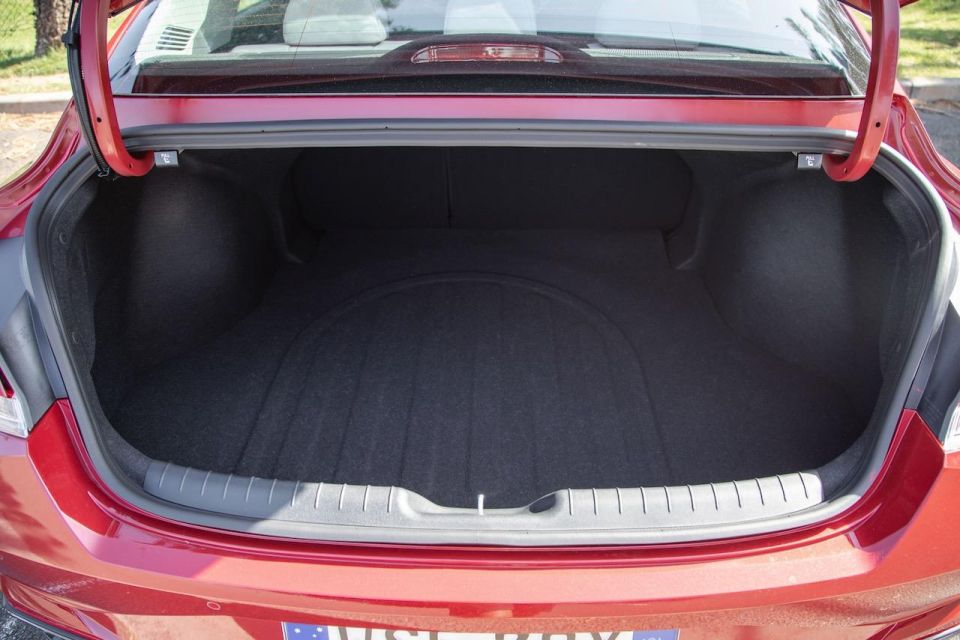
The wrap-around, driver-centric dash is another feature that adds to driver satisfaction behind the wheel, as does the new four-spoke steering wheel design.
It feels more premium than rival makes and far better overall than what you might expect of this class.
Another benefit from the new platform is the sporty driving position – made possible by the 20 to 25mm lower seating position – putting the driver firmly into the car rather than on top of it.
Even the leather-topped shifter looks and feels expensive, as does the knurled switch gear. Honestly, it’s difficult to find fault with such a pleasant ambience.

While the Elite might add a stack of extra kit on top of the base Active version of the i30 Sedan, the powertrain remains exactly the same; a naturally aspirated 2.0-litre four-cylinder petrol engine knocking out an acceptable 117kW of power at 6200rpm and 191Nm of torque from the 4500rpm mark, through a six-speed automatic transmission driving the front wheels.
Combined fuel consumption claim with the above set-up is 7.0L/100km, though, even at our most efficient we could only manage 9.2L/100km as a best-case scenario, which climbed as high as 13.8L/100km – under exclusively urban conditions.
Should you be swayed by the more powerful N Line variant, you’ll get a 1.6-litre turbocharged petrol engine making 150kW and 265Nm, paired to either a six-speed manual or seven-speed DCT.
By comparison, the equivalently-priced Toyota Corolla SX Hybrid Sedan makes 90kW and 142Nm from its 1.8-litre four-cylinder unit, while the Mazda 3 G20 Touring produces 114kW and 200Nm out of its 2.0-litre petrol motor.
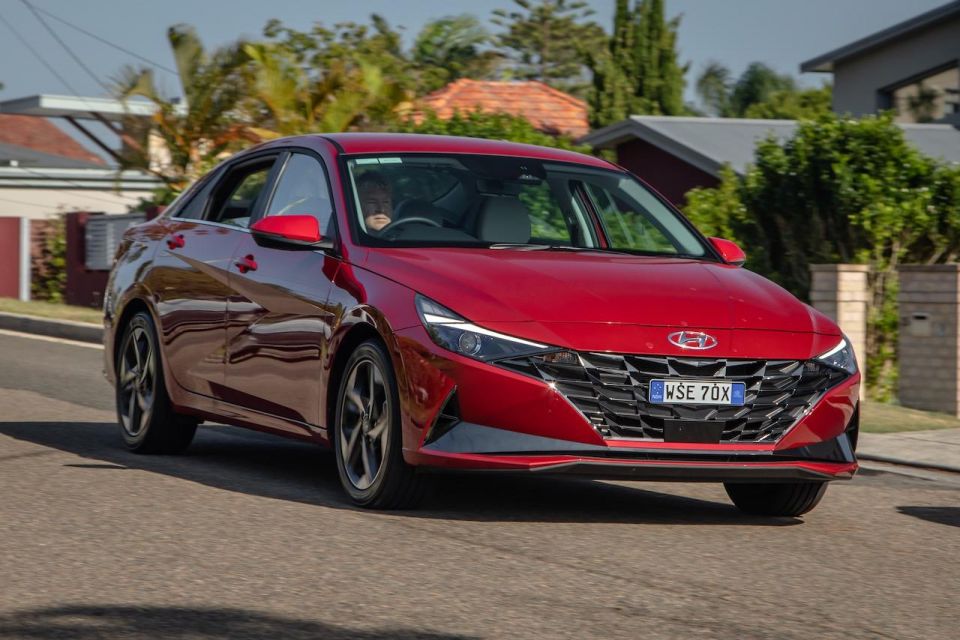
Right from the get-go you’re very aware this is a noticeably more resolved drive than the old Elantra and current hatch line-up.
It’s the distinct lack of body roll through the sharper corners along with what feels like a neutral chassis balance. There’s more competency and feedback under foot here than any other standard-issue i30 I’ve ever driven.
Not surprising, really, when you consider the improved suspension geometry from solid six-point mountings and additional reinforcing for better steering response. Behind the wheel the i30 Sedan definitely feels more pointed when turning in.
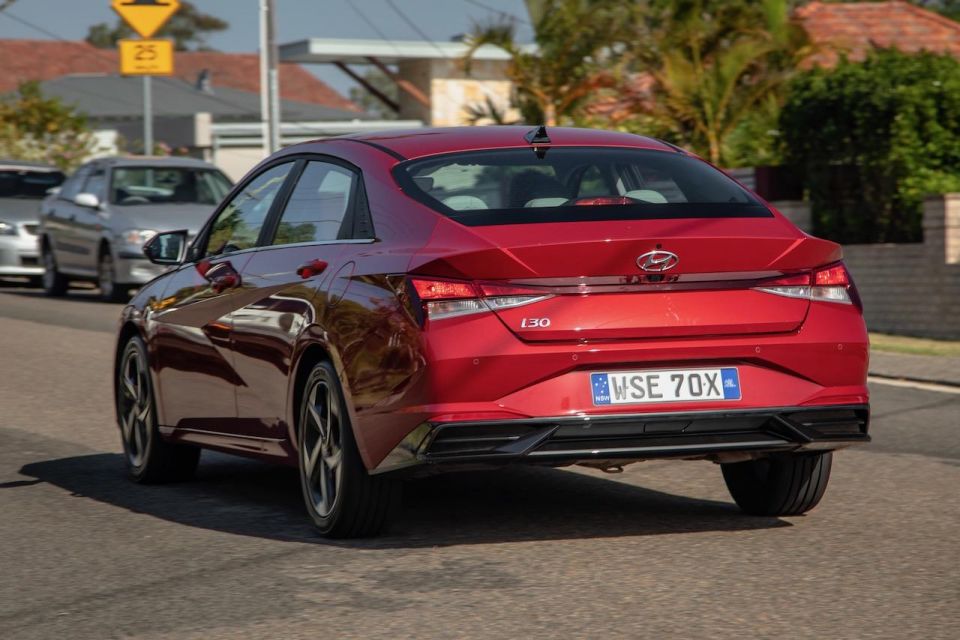
Where expert car reviews meet expert car buying – CarExpert gives you trusted advice, personalised service and real savings on your next new car.
It’s more stable, too, under quick changes of direction – to the point where you could be driving an N Line version of old. Braking is confident with good pedal feel and the ride is compliant and sporty at the same time with a tad of suppleness for a what we would describe is a comfortable ride without compromising the sure-footed handling.
It’s impressive for a family-friendly sedan and a direct result of the brand’s continued local tuning program which considers the various state of road surfaces and conditions that seem to plague this country nowadays. Again, the i30 Sedan feels resolved and very well engineered for a car in this class – especially over broken roads.
Engine wise, it’s a solid all-round powertrain that performs well in its suburban duties. The test area covered is mostly undulated terrain with plenty of steep inclines and progress is adequate, if not refined. The four-cylinder engine responds well to a measured throttle rather than any impatient prodding.
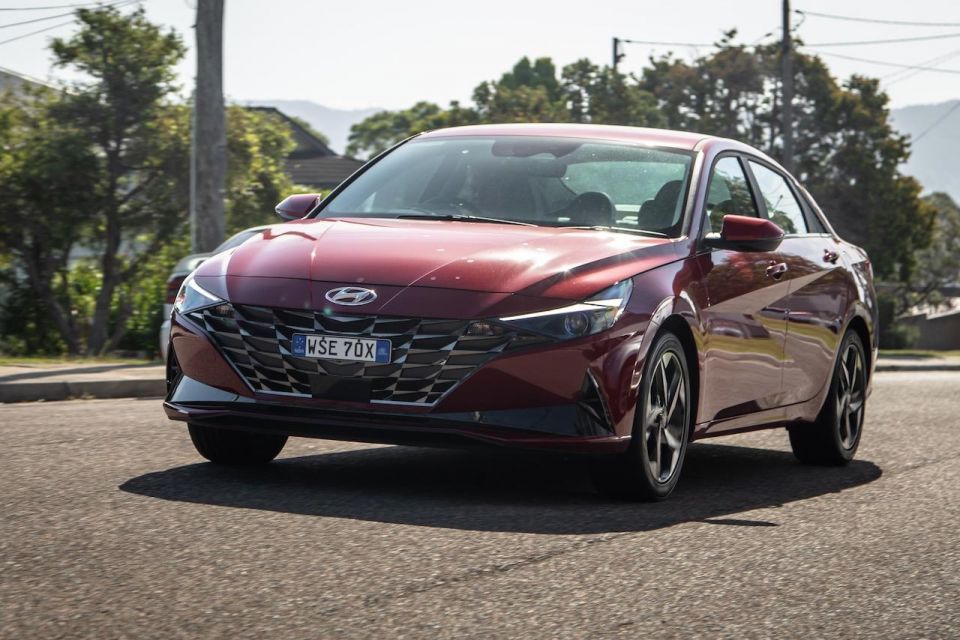
Cabin noise is more subdued under significant load thanks to a raft of under-skin measures at play here such as redesigned doors, optimised door-glass sealing and sound-absorbing materials along with more rigid suspension components.
Naturally-aspirated engines of this displacement tend to cause quite a racket in the cockpit when a boot full of throttle is applied, but not the i30 Sedan. It’s noticeably less than we might have expected and thus a more pleasant space as a result.
That said, we do look forward to getting behind the wheel of the N Line version the moment it drops for a launch.

We’re always bemused by the fact that Hyundai has adopted a five-year unlimited kilometre warranty across its new car range while sister brand Kia is able to offer seven years.
Capped-price servicing is available at $259 for four of the first five 12-month/15,000km servicing intervals, while the fourth (48 month/60,000km) visit costs $359.
There’s an added incentive to stay with your Hyundai dealer with the offer of up to 10 years of free roadside assistance and navigation map updates for those that don’t use Apple CarPlay or Android Auto.
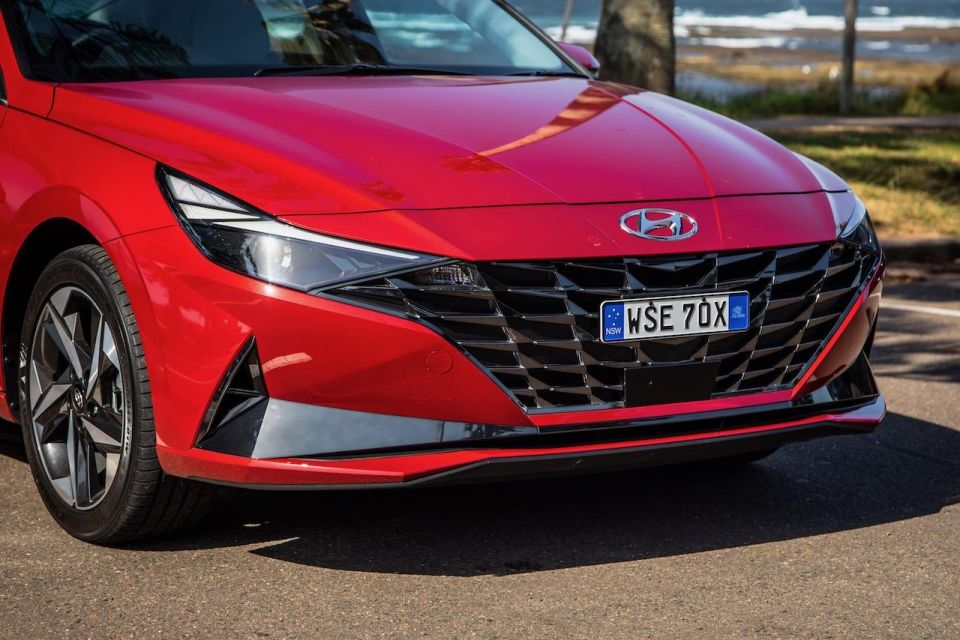
If you thought small sedans were all but dead and buried (we all thought that), you’d be wise to reassess that line of thought on the basis of our time behind the wheel of the i30 Sedan Elite.
It’s progressive styling, mouth-watering cockpit and newfound ride and handling competency are three good reasons to put this thing on your shortlist.
Factor in the cheap running costs and the level of equipment and safety on board, and it could be a home run.
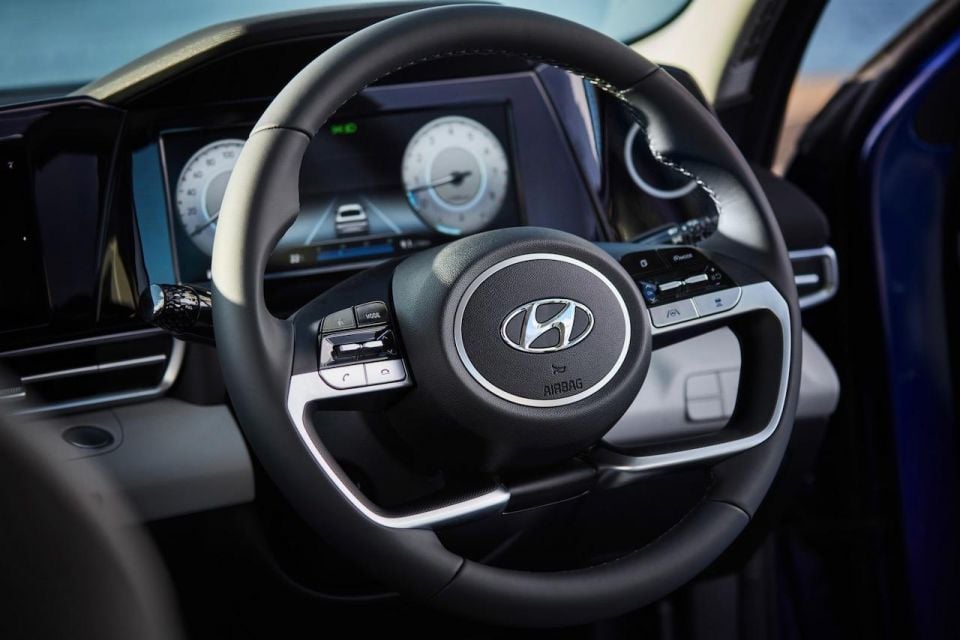
Click the images for the full gallery
MORE: Hyundai i30 news and reviews MORE: Everything Hyundai
Where expert car reviews meet expert car buying – CarExpert gives you trusted advice, personalised service and real savings on your next new car.
Anthony Crawford is a CarExpert co-founder and senior presenter with 20+years in automotive journalism and content creation.


William Stopford
1 Hour Ago


Matt Campbell
9 Hours Ago


William Stopford
1 Day Ago


CarExpert.com.au
4 Days Ago


Max Davies
5 Days Ago


Damion Smy
6 Days Ago